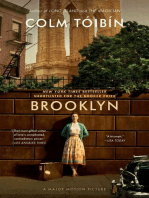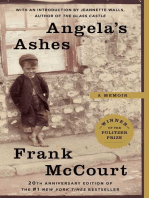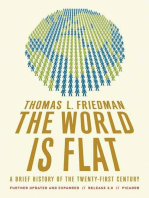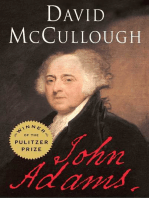Painting: Realism, in The Arts, The Accurate, Detailed, Unembellished Depiction of Nature or of
Painting: Realism, in The Arts, The Accurate, Detailed, Unembellished Depiction of Nature or of
Uploaded by
Alin VoicuCopyright:
Available Formats
Painting: Realism, in The Arts, The Accurate, Detailed, Unembellished Depiction of Nature or of
Painting: Realism, in The Arts, The Accurate, Detailed, Unembellished Depiction of Nature or of
Uploaded by
Alin VoicuOriginal Description:
Original Title
Copyright
Available Formats
Share this document
Did you find this document useful?
Is this content inappropriate?
Copyright:
Available Formats
Painting: Realism, in The Arts, The Accurate, Detailed, Unembellished Depiction of Nature or of
Painting: Realism, in The Arts, The Accurate, Detailed, Unembellished Depiction of Nature or of
Uploaded by
Alin VoicuCopyright:
Available Formats
realism, in the arts, the accurate, detailed, unembellished depiction of nature or of
contemporary life. Realism rejects imaginative idealization in favour of a close
observation of outward appearances. As such, realism in its broad sense
has comprised many artistic currents in different civilizations. In the visual arts, for
example, realism can be found in ancient Hellenistic Greek sculptures accurately
portraying boxers and decrepit old women. The works of such 17th-century painters
as Caravaggio, the Dutch genre painters, the Spanish painters José de Ribera, Diego
Velázquez, and Francisco de Zurbarán, and the Le Nain brothers in France are realist in
approach. The works of the 18th-century English novelists Daniel Defoe, Henry
Fielding, and Tobias Smollett may also be called realistic.
Realism was not consciously adopted as an aesthetic program until the mid-19th century
in France, however. Indeed, realism may be viewed as a major trend in French novels
and paintings between 1850 and 1880. One of the first appearances of the
term realism was in the Mercure français du XIXe siècle in 1826, in which the word is
used to describe a doctrine based not upon imitating past artistic achievements but
upon the truthful and accurate depiction of the models that nature and contemporary
life offer the artist. The French proponents of realism were agreed in their rejection of
the artificiality of both the Classicism and Romanticism of the academies and on the
necessity for contemporaneity in an effective work of art. They attempted to portray the
lives, appearances, problems, customs, and mores of the middle and lower classes, of
the unexceptional, the ordinary, the humble, and the unadorned. Indeed, they
conscientiously set themselves to reproducing all the hitherto-ignored aspects of
contemporary life and society—its mental attitudes, physical settings, and material
conditions.
Realism was stimulated by several intellectual developments in the first half of the 19th
century. Among these were the anti-Romantic movement in Germany, with its emphasis
on the common man as an artistic subject; Auguste Comte’s Positivist philosophy, in
which sociology’s importance as the scientific study of society was emphasized; the rise
of professional journalism, with its accurate and dispassionate recording of current
events; and the development of photography, with its capability of mechanically
reproducing visual appearances with extreme accuracy. All these developments
stimulated interest in accurately recording contemporary life and society.
Painting
Gustave Courbet was the first artist to self-consciously proclaim and practice the realist
aesthetic. After his huge canvas The Studio (1854–55) was rejected by
the Exposition Universelle of 1855, the artist displayed it and other works under the
label “Realism, G. Courbet” in a specially constructed pavilion. Courbet was strongly
opposed to idealization in his art, and he urged other artists to instead make the
commonplace and contemporary the focus of their art. He viewed the frank portrayal of
scenes from everyday life as a truly democratic art. Such paintings as his Burial at
Ornans (1849) and the Stone Breakers (1849), which he had exhibited in the Salon of
1850–51, had already shocked the public and critics by the frank and unadorned
factuality with which they depicted humble peasants and labourers. The fact that
Courbet did not glorify his peasants but presented them boldly and starkly created a
violent reaction in the art world.
The style and subject matter of Courbet’s work were built on ground already broken by
the painters of the Barbizon School. Théodore Rousseau, Charles-François
Daubigny, Jean-François Millet, and others in the early 1830s settled in the French
village of Barbizon with the aim of faithfully reproducing the local character of the
landscape. Though each Barbizon painter had his own style and specific interests, they
all emphasized in their works the simple and ordinary rather than the grandiose and
monumental aspects of nature. They turned away from melodramatic picturesqueness
and painted solid, detailed forms that were the result of close observation. In such works
as The Winnower (1848), Millet was one of the first artists to portray peasant labourers
with a grandeur and monumentality hitherto reserved for more important persons.
Another major French artist often associated with the realist tradition, Honoré
Daumier, drew satirical caricatures of French society and politics. He found his
working-class heroes and heroines and his villainous lawyers and politicians in the
slums and streets of Paris. Like Courbet, he was an ardent democrat, and he used his
skill as a caricaturist directly in the service of political aims. Daumier used energetic
linear style, boldly accentuated realistic detail, and an almost sculptural treatment of
form to criticize the immorality and ugliness he saw in French society.
You might also like
- The Subtle Art of Not Giving a F*ck: A Counterintuitive Approach to Living a Good LifeFrom EverandThe Subtle Art of Not Giving a F*ck: A Counterintuitive Approach to Living a Good LifeRating: 4 out of 5 stars4/5 (5891)
- The Gifts of Imperfection: Let Go of Who You Think You're Supposed to Be and Embrace Who You AreFrom EverandThe Gifts of Imperfection: Let Go of Who You Think You're Supposed to Be and Embrace Who You AreRating: 4 out of 5 stars4/5 (1103)
- Never Split the Difference: Negotiating As If Your Life Depended On ItFrom EverandNever Split the Difference: Negotiating As If Your Life Depended On ItRating: 4.5 out of 5 stars4.5/5 (870)
- Grit: The Power of Passion and PerseveranceFrom EverandGrit: The Power of Passion and PerseveranceRating: 4 out of 5 stars4/5 (597)
- Hidden Figures: The American Dream and the Untold Story of the Black Women Mathematicians Who Helped Win the Space RaceFrom EverandHidden Figures: The American Dream and the Untold Story of the Black Women Mathematicians Who Helped Win the Space RaceRating: 4 out of 5 stars4/5 (912)
- Shoe Dog: A Memoir by the Creator of NikeFrom EverandShoe Dog: A Memoir by the Creator of NikeRating: 4.5 out of 5 stars4.5/5 (543)
- The Hard Thing About Hard Things: Building a Business When There Are No Easy AnswersFrom EverandThe Hard Thing About Hard Things: Building a Business When There Are No Easy AnswersRating: 4.5 out of 5 stars4.5/5 (352)
- Elon Musk: Tesla, SpaceX, and the Quest for a Fantastic FutureFrom EverandElon Musk: Tesla, SpaceX, and the Quest for a Fantastic FutureRating: 4.5 out of 5 stars4.5/5 (474)
- Her Body and Other Parties: StoriesFrom EverandHer Body and Other Parties: StoriesRating: 4 out of 5 stars4/5 (830)
- The Sympathizer: A Novel (Pulitzer Prize for Fiction)From EverandThe Sympathizer: A Novel (Pulitzer Prize for Fiction)Rating: 4.5 out of 5 stars4.5/5 (122)
- The Little Book of Hygge: Danish Secrets to Happy LivingFrom EverandThe Little Book of Hygge: Danish Secrets to Happy LivingRating: 3.5 out of 5 stars3.5/5 (414)
- The Emperor of All Maladies: A Biography of CancerFrom EverandThe Emperor of All Maladies: A Biography of CancerRating: 4.5 out of 5 stars4.5/5 (272)
- The Yellow House: A Memoir (2019 National Book Award Winner)From EverandThe Yellow House: A Memoir (2019 National Book Award Winner)Rating: 4 out of 5 stars4/5 (99)
- The World Is Flat 3.0: A Brief History of the Twenty-first CenturyFrom EverandThe World Is Flat 3.0: A Brief History of the Twenty-first CenturyRating: 3.5 out of 5 stars3.5/5 (2270)
- Devil in the Grove: Thurgood Marshall, the Groveland Boys, and the Dawn of a New AmericaFrom EverandDevil in the Grove: Thurgood Marshall, the Groveland Boys, and the Dawn of a New AmericaRating: 4.5 out of 5 stars4.5/5 (269)
- Team of Rivals: The Political Genius of Abraham LincolnFrom EverandTeam of Rivals: The Political Genius of Abraham LincolnRating: 4.5 out of 5 stars4.5/5 (235)
- A Heartbreaking Work Of Staggering Genius: A Memoir Based on a True StoryFrom EverandA Heartbreaking Work Of Staggering Genius: A Memoir Based on a True StoryRating: 3.5 out of 5 stars3.5/5 (232)
- On Fire: The (Burning) Case for a Green New DealFrom EverandOn Fire: The (Burning) Case for a Green New DealRating: 4 out of 5 stars4/5 (74)
- The Unwinding: An Inner History of the New AmericaFrom EverandThe Unwinding: An Inner History of the New AmericaRating: 4 out of 5 stars4/5 (45)
- 6280Document13 pages6280sanbarunNo ratings yet
- (Mil) PRE INDUSTRIAL AGEDocument37 pages(Mil) PRE INDUSTRIAL AGEAnna Alexandra UntalanNo ratings yet
- JAMES - Chapter 16 - Gum BichromateDocument50 pagesJAMES - Chapter 16 - Gum Bichromatejfmelendez100% (1)
- UntitledDocument3 pagesUntitledAlin VoicuNo ratings yet
- RocketsDocument2 pagesRocketsAlin VoicuNo ratings yet
- A SubmarineDocument4 pagesA SubmarineAlin VoicuNo ratings yet
- The Labels Existentialism and Existentialist Are Often Seen As Historical Conveniences in As Much As They Were First Applied To Many Philosophers Long After They Had DiedDocument1 pageThe Labels Existentialism and Existentialist Are Often Seen As Historical Conveniences in As Much As They Were First Applied To Many Philosophers Long After They Had DiedAlin VoicuNo ratings yet
- Basics of Corel DrawDocument34 pagesBasics of Corel DrawAlakh Sahgal100% (1)
- Lo4 Science Fiction EssayDocument3 pagesLo4 Science Fiction Essayapi-295375953No ratings yet
- Learn To Paint A Portrait - Little Girl EnglishDocument25 pagesLearn To Paint A Portrait - Little Girl Englishsasbng100% (1)
- MM 47 03 2017Document76 pagesMM 47 03 2017Adolf Bormann100% (1)
- For Drawing Animals: How To Use Sketchbook ProDocument11 pagesFor Drawing Animals: How To Use Sketchbook ProBayusaputra100% (2)
- Multimedia Report SRMDocument48 pagesMultimedia Report SRMRopeNo ratings yet
- Brun Davan BrochureDocument9 pagesBrun Davan BrochureGRC OnlineNo ratings yet
- Kerrang - May 6 2017 PDFDocument64 pagesKerrang - May 6 2017 PDFbtbs100% (1)
- Creating Colorful KnotworkDocument34 pagesCreating Colorful KnotworkbouncingboyNo ratings yet
- A Kind of Ear Pendant Fashioned From Green NephriteDocument3 pagesA Kind of Ear Pendant Fashioned From Green NephriteAyaw Ko NaNo ratings yet
- The Theory and Practice of Perspective by Storey, G. A. (George Adolphus), 1834-1919Document174 pagesThe Theory and Practice of Perspective by Storey, G. A. (George Adolphus), 1834-1919Gutenberg.orgNo ratings yet
- Pms ColorsDocument10 pagesPms ColorspadiroNo ratings yet
- Hum1 Activity 1 3Document4 pagesHum1 Activity 1 3Edgar MacalaladNo ratings yet
- Parry K 17352400 p1Document18 pagesParry K 17352400 p1api-421623559No ratings yet
- The Evolution of An Emblem: The Arm & Hammer by Kim MunsonDocument20 pagesThe Evolution of An Emblem: The Arm & Hammer by Kim MunsonLill GalilNo ratings yet
- Leonardo Da Vinci Thesis StatementDocument4 pagesLeonardo Da Vinci Thesis Statementjenniferriveraerie100% (1)
- J. Kim SessumsDocument8 pagesJ. Kim SessumsAThaxtonNo ratings yet
- Script Analysis of Entourage Season 2 Episode 11-Blue Balls LagoonDocument3 pagesScript Analysis of Entourage Season 2 Episode 11-Blue Balls Lagoonapi-285011028No ratings yet
- MODULE 5 - Art AppreciationDocument5 pagesMODULE 5 - Art Appreciationmenard3jonas3barboni100% (2)
- General Catalogue: SeptemberDocument267 pagesGeneral Catalogue: SeptemberDaniel Stefan100% (1)
- Games Workshop Citadel Paint System New Games Workshop Colors PDFDocument4 pagesGames Workshop Citadel Paint System New Games Workshop Colors PDFVincenzo VestitaNo ratings yet
- Pulsera Crochet Nudo Infinito TutorialDocument3 pagesPulsera Crochet Nudo Infinito TutorialHelenatxi LlorensNo ratings yet
- A Landmark Rises and Establishes Its Name As City's Identity. That'S Brys BuzzDocument29 pagesA Landmark Rises and Establishes Its Name As City's Identity. That'S Brys Buzzkksingh007indiaNo ratings yet
- Europe 1789 To 1914 - Encyclopedia of The Age of Industry and Empire (PDFDrive)Document571 pagesEurope 1789 To 1914 - Encyclopedia of The Age of Industry and Empire (PDFDrive)ArekNo ratings yet
- Illustrator Cs5 Keyboard ShortcutsDocument2 pagesIllustrator Cs5 Keyboard ShortcutsHenry SalazarNo ratings yet
- IVAN ROY A - L CHARLES RAMANI Moe - Identifying ShapesDocument1 pageIVAN ROY A - L CHARLES RAMANI Moe - Identifying ShapesIVAN ROY A/L CHARLES RAMANI MoeNo ratings yet
- Arts EssayDocument1 pageArts EssayAlana VerceluzNo ratings yet










































































